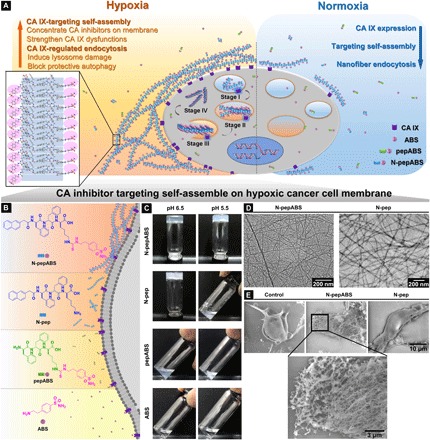Fig. 1. Molecular design of self-assembled CA IX inhibitors and their hypoxic cancer cell–targeted self-assembly.

(A) Depending on overexpression of CA IX enzymes of hypoxic cancer cells, small molecules of N-pepABS achieve CA IX–targeted self-assembly, which concentrate CA IX inhibitors on hypoxic cancer cell membrane and subsequently interrupt the normal activities of hypoxic cancer cells. In addition, these N-pepABS–based nanofibers undergo CA IX–regulated endocytosis, promoting intracellular uptakes of the self-assembled nanofibers under hypoxia. During the process of internalization (stages I to IV), N-pepABS–based nanofibers may convert to much bigger bunches of nanofiber that pierce intracellular acid vesicles, therefore introducing highly selective toxicities for hypoxic cancer cells. (B) The chemical structures of self-assembled CA IX inhibitors. (C) In vitro gelation performance of N-pepABS, N-pep, pepABS, and ABS at pH 6.5 or pH 5.5. (D) Transmission electron microscope (TEM) images of hydrogels formed by 0.75 wt % of N-pepABS and N-pep at pH 6.5. (E) Environment scanning electron microscope images of MDA-MB-231 cells after 24-hour incubation with 500 μM medium control, N-pepABS, or N-pep under hypoxia condition (1.0% of O2) (Photo credit: Chunying Chen, The National Center for Nanoscience and Technology of China).
